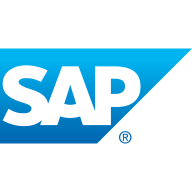

Microsoft Azure and SAP Cloud Platform are two prominent players in the cloud computing market. While Azure holds an advantage in flexibility and integration, SAP Cloud Platform leads in ERP-specific solutions and integration capabilities.
Features: Microsoft Azure offers a versatile cloud environment with language and framework flexibility, distributed caching, and a content delivery network to enhance global application performance. It also supports wide integration with both Microsoft and non-Microsoft systems. SAP Cloud Platform is particularly strong in ERP solutions, providing scalability and numerous AI-driven microservices, making it ideal for leveraging existing SAP systems.
Room for Improvement: Microsoft Azure faces challenges with pricing transparency, user interface, and customer support responsiveness, often coupled with high costs and complex configurations. SAP Cloud Platform struggles with high deployment costs and complex processes for large enterprises, needing better integration with third-party applications.
Ease of Deployment and Customer Service: Azure provides flexibility across cloud models, ensuring rapid deployment, though navigating its support channels can prove difficult. Conversely, SAP Cloud Platform demands more extensive deployment effort, but consistently offers high-rated customer service despite initial integration hurdles.
Pricing and ROI: Azure offers competitive pricing with pay-as-you-go options, though cost predictability remains challenging without strategic management. SAP Cloud Platform's higher costs can overshadow smaller enterprises, yet it provides substantial ROI when fully utilized within the SAP ecosystem.
The value for money is good, and Microsoft Azure has positively impacted our operational costs.
When we use Microsoft Azure, it provides enhanced security from our perspective, though I am not certain about the financial return on investment or benefits for our users as I do not have that information.
Top management buy-in is crucial, and conducting an ROI analysis is essential before adoption to ensure the investment aligns with value.
Orders are managed online, integrated with S/4HANA, reducing chances of fraud or communication errors in processes like purchase orders and sales.
In the last three to four years, whatever we have invested, we have received two to three times back from our investment.
Microsoft needs to engage L3 and L2 in support when specified in service tickets.
The support from Microsoft Azure is good.
Regarding technical support from Microsoft, I find they are responsive and helpful, depending on which support package you're on.
The availability of knowledgeable support to the implementation partners and the customers could be better.
I rate the technical support as ten out of ten because there is often a need for continuous technical support.
Regarding support, whenever we are creating a ticket for any problem, we want the solution immediately at the earliest.
Microsoft Azure is not just one product; it is a platform with multiple products within Microsoft Azure, and I would say it is scalable and would rate it a nine.
The scalability of Microsoft Azure is excellent for growth and adaptation, depending on company requirements.
It has different kinds of designs that allow for management and deployment in multi-zones, offering both scalable and non-scalable options.
On a scale of one to ten, I'd rate its scalability at nine and a half to ten.
SAP Cloud Platform is most suitable for various business needs, allowing easy expansion.
We noticed a few critical servers went down due to a Microsoft Azure-end hardware issue.
We are now migrating clients without the zoning into mandatory multi-zone deployments, so if one zone goes down, their application and database remain live.
Microsoft Azure is quite stable, but recent outages and security issues have slightly decreased my confidence.
If the databases are accurately managed, the solutions and processes are performed quickly and efficiently.
Earlier, we had individual applications, but now everything is migrated to SAP, and it's all on a single platform, making it easier for management to make timely decisions.
SAP Cloud Platform is pretty stable, although there are occasional rare glitches.
Recent outages and security issues are also a concern, causing a decrease in confidence, especially when partnering with third-party companies.
The administrative side is suitable for technical people, but our finance and HR super users find it less user-friendly, as they prefer drag-and-drop features to build their own solutions without contacting IT.
There is still room for improvement in terms of pricing.
Allowing more third-party applications to be integrated into the cloud platform would make it easier for customers to adopt SAP Cloud Platform.
SAP Cloud Platform should improve on integrating third-party applications with S/4HANA.
In 2024, we will have migrated to S/4HANA through RISE with SAP.
Microsoft solutions might be cheaper than some services like AWS, but some solutions may be more expensive depending on the services compared.
Copilot is expensive based on recent pricing for our POC.
They have discounts and also provide promotions for a three-year reservation which comes with significant discounts on the infrastructure part.
SAP is competitive compared to other enterprise solutions like Oracle, though not necessarily cheap.
The cost for SAP Cloud Platform is high as the server is expensive.
Whatever we want to purchase, it is in lakhs of rupees or crores only.
Power BI, another feature of Azure, is extremely elegant and has robust features that support forecasting using R and Python.
If Microsoft gives a report, such as a server performance report in a detailed way, which shows what is consuming more CPU, memory, and disk IO, and network utilization during a particular time, it would be helpful to visualize that information.
What is very interesting in terms of scalability is the automatic possibilities to provision some new machines to be able to absorb the number of users we have in the system.
The main benefits of the SAP Cloud Platform for us are that earlier we had the primary data center at our place, but now we have shifted to the cloud.
It converts CapEx into OPEX due to its SaaS model.
The most proficient feature of SAP Cloud Platform is integration for data services linked with Fiori apps.
| Product | Market Share (%) |
|---|---|
| Microsoft Azure | 17.4% |
| SAP Cloud Platform | 6.4% |
| Other | 76.2% |


| Company Size | Count |
|---|---|
| Small Business | 140 |
| Midsize Enterprise | 53 |
| Large Enterprise | 148 |
| Company Size | Count |
|---|---|
| Small Business | 15 |
| Midsize Enterprise | 7 |
| Large Enterprise | 25 |
Microsoft Azure integrates services and offers flexibility, ensuring compatibility with diverse environments. Its scalability, security, and cost-efficient features enhance deployment and management, making it ideal for infrastructure services and application hosting.
Azure provides a comprehensive suite of tools for application deployment, virtual machine management, and data analytics. It allows seamless integration with Power BI and offers a user-friendly interface supported by detailed documentation and technical support. Though users appreciate its capabilities, they sometimes face challenges with costs, setup, and interface complexity, alongside integration and performance issues. Frequent updates and a learning curve are also noted, though Azure's cloud-based security and scalability remain critical for disaster recovery and business continuity.
What are Azure's key features?Microsoft Azure is widely implemented in industries like financial services, healthcare, and logistics for hosting enterprise applications and vital services. Companies utilize its capabilities for IoT applications, DevOps, and Kubernetes clusters, benefiting from its cloud migrations, data analytics, and active directory support.
SAP Cloud Platform is an integration platform as a service (iPaaS) and PaaS cloud tool. It powers applications that deliver real-time insights to contribute to more effective and timely decision-making. Customers all over the world from different-sized companies use SAP Cloud Platform to build application extensions, integrate landscapes, or extend existing enterprise applications in the cloud.
The platform incorporates innovative technologies, including big data, Internet of Things (IoT), artificial intelligence (AI), and machine learning (ML). SAP Cloud Platform supports native services and products by SAP, as well as partners with popular platforms such as Microsoft Azure, Google Cloud Platform, Amazon AWS, and Alibaba Cloud.
Users of the product can extend, integrate, and develop applications on premises and in the cloud. The product offers flexibility, agility, and scalability, as it enables easy integration and connection of different applications within the platform. The solution is based on open standards and provides a wide range of development tools.
SAP has announced that they are removing SAP Cloud Platform as a brand name and moving its capabilities within SAP Business Technology Platform (SAP BTP). The features of SAP Cloud Platform will be integrated into SAP BTP to assist with data management and analytics, alongside other components of the platform. Existing customers of SAP Cloud Platform will continue to benefit from its products under SAP Integration Suite and SAP Extension Suite.
SAP Cloud Platform Capabilities
The solution offers a wide variety of tools, application capabilities, services, and application programming interface (API). These can be categorized in the following ways:
SAP Cloud Platform Benefits
The platform has many benefits which improve their client’s workflows. They include the following:
Reviews from Real Users
Shylaraj AK, a senior architect at a construction company, describes SAP Cloud Platform as easy to maintain, great features, and helpful support, which attributes to his high rating for the product.
Ehab-El H., chief executive officer at Asis, likes SAP Cloud Platform because it is easy to use with a fast deployment and straightforward setup.
We monitor all PaaS Clouds reviews to prevent fraudulent reviews and keep review quality high. We do not post reviews by company employees or direct competitors. We validate each review for authenticity via cross-reference with LinkedIn, and personal follow-up with the reviewer when necessary.